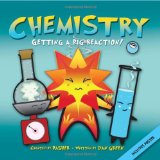20. How do you change a simple picture book into a full length movie? The filmmakers must have had a few nightmares trying to get this one right. Or maybe just a wild time…
Yes, the movie was based on Maurice Sendak‘s picture book, Where the Wild Things Are.
Maurice Sendak is a fabulous illustrator, but the books he authored are the ones that have grabbed the most attention. One of our family favorites is the rollicking romp through the months, Chicken Soup With Rice.
21. Do made-for television movies count? If you suffer from arachnophobia you might not enjoy this movie as much as most children do.
Guess I should have given better clues for this one. David Kirk‘s Miss Spider books are unlikely to instill fear in anyone. Starting with the release of Miss Spider’s Tea Party, this vegetarian spider has been helping countless children learn how to get along with others.
David Kirk lives in upstate New York. He started out making toys, but says the little book The Gnome’s Almanack, illustrated by Ida Bohatta Morpurgo (1942) inspired him to try children’s books. The result has been a rousing success. (Note: To show how much of a book nerd I am, I actually found a copy of The Gnome’s Almanck to buy after reading about David Kirk’s affection for it.)
Miss Spider’s Sunny Patch Kids was released for TV in 2003, with Brooke Shields as the voice of Miss Spider and Rick Moranis as Holley.
Now you can buy an iPad App for Miss Spider’s Tea Party. Bet Ida Bohatta Morpurgo didn’t see that coming!
22. This author also had more than one book made into movies. His books are best known for their animal main characters. Arachnophobia might be a problem for people watching one of these movies as well.
E.B. White wrote Stuart Little, The Trumpet of the Swan, and Charlotte’s Web, which were all made into movies. In fact, Stuart Little led to a series of three movies, the last being Stuart Little: Call of the Wild, and Charlotte’s Web can be found in both animated and live action versions. The Trumpet of the Swan was released as an animated film in 2001, but did not receive much popular acclaim.
Stuart Little is about the adventures of a mouse who is born to human parents. It was E.B. White’s first children’s book.
The Trumpet of the Swan features a swan who learns how to play the trumpet. The swan has a human friend, a boy named Sam.
Charlotte’s Web is the story of Wilbur the pig and his great friendship with Charlotte the spider. I thought my reference to arachnophobia my trigger someone to think of Charlotte, although I don’t think anyone could fear spiders after reading this classic book.




